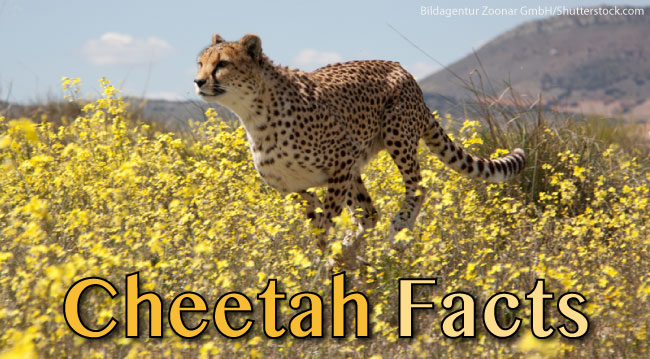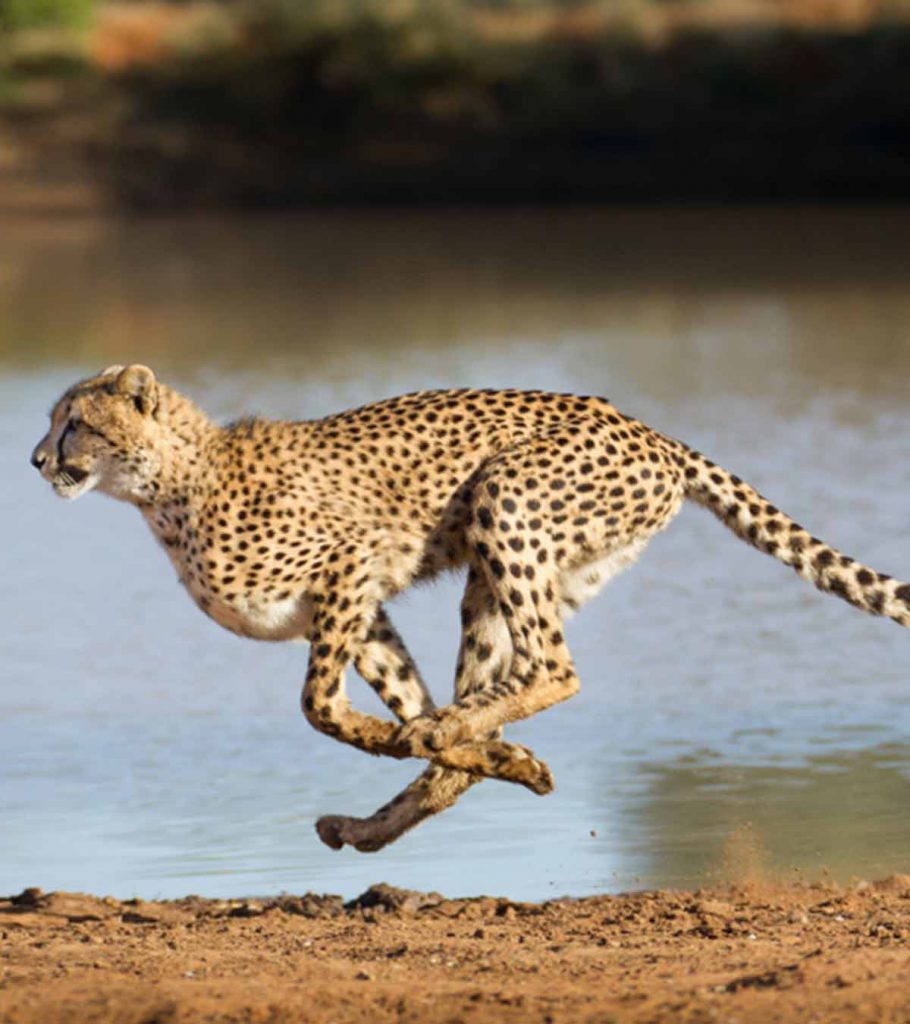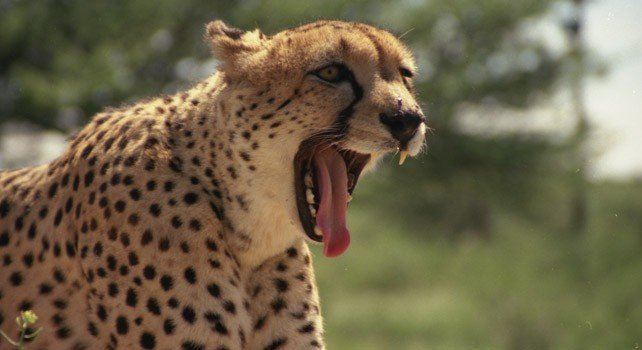9 Interesting Facts About Cheetahs : The cheetah is the world’s fastest terrestrial animal. The East African Cheetah (Acinonyx jubatus), which is renowned for its amazing speed, agility, and spotted coat, may be found in the grasslands and savannas of Tanzania, Kenya, Uganda, and Somalia. Let’s look at the top nine interesting facts about the ferocious, swift, and cunning cheetah.

- There are five recognized subspecies of the cheetah.
There are thought to be 6,600 mature cheetahs in the wild, and their numbers are declining. Their nearest living relatives are cougars and jaguarundis, both wild cats that are indigenous to the Americas, and they are currently included under the genus Acinonyx. A total of five cheetah subspecies have been identified:
- Acinonyx jubatus hecki, the Northwest African cheetah
- Acinonyx jubatus fearsoni (also known as A.j. raineyi)
- Acinonyx jubatus
- The Northeast African cheetah, Acinonyx jubatus soemmerringi
- Venaticus Acinonyx jubatus
Except for the Northwest African and Asiatic cheetah, which are currently critically endangered, all cheetah subspecies are classified as vulnerable by the IUCN.

- Catch Me If You Can?
Cheetahs are the world’s fastest land animals over short distances, capable of reaching speeds of up to 64 miles per hour in under three seconds. Usain Bolt now holds the title of the fastest man in the world, with a top speed of about 27 miles per hour, for human reference. Whether in the wild or on a race track, a cheetah can outrun the fastest man in the world by a factor of more than two! However, in terms of endurance, these lean large cats can only keep up their top pace for a limited amount of time depending on their health and energy levels, as well as the weather and terrain. In spite of the fact that when chasing their prey, cheetahs’ body temperatures remain largely steady, they are known to give up the hunt.
- Being a predator isn’t easy.
The majority of the animals that cheetahs pursue are small to medium-sized ungulates, including springbok, duiker, gazelle, kob, and impala. However, they can also eat small mammals like hares and ground-dwelling birds. Male cheetahs have a reputation for banding together to protect their territories and hunt considerably larger prey, such as wildebeest, kudu, or eland. Cheetahs rarely scavenge, in contrast to other predators in Africa. In places with high numbers of large carnivores, they are also known to eat swiftly and forsake their prey once other predators are noticed. Roughly 10% of cheetah kills are ultimately taken, primarily by lions and spotted hyenas. The preference of cheetahs to hunt during the day, when other predators are least active, may be explained by this.
- Is it a cheetah or a leopard?
Due to the distinct yet similar dark patches on their bodies, cheetahs and leopards are frequently mistaken for one another. But if you know what to look for, it can become simpler to tell a cheetah from a leopard. While leopards lack any distinctive facial markings, cheetahs have two dark, curving lines between their nose and cheeks. Their bodies also have different patterns of spots: the cheetah has round or oval-shaped markings, while the leopard has characteristic spots on its fur known as “rosettes,” which have the form of roses.
A cheetah can move quickly when pursuing prey at fast speeds because it is slimmer, lighter, and taller than a leopard. It also possesses claws that can partially retract. Leopards, on the other hand, are smaller but more robust and bulky big cats with retractable claws, which makes them superb climbers of trees. Leopards roar like other big cats, whereas cheetahs chirp nearly like birds.
- They are under threat of extinction in the wild.
Cheetahs were historically common throughout Africa, as well as in the Arabian Peninsula and central India. However, they are now only found in 10% of their former range because they have mostly vanished from the African continent. The current home of the cheetah is in Southern and Eastern Africa. The wild cheetah population has experienced a startling drop. Asian cheetahs are currently confined to Iran’s central deserts. Threats to the remaining cheetah populations include habitat loss and fragmentation, a lack of wild prey, conflicts between people and wildlife, and infrastructure development.
- Cheetahs Can’t Fully Retract Their Claws.
The cheetah’s scientific name, Acinonyx jubatus, was first given in 1776. The Greek word Acinonyx, which refers to its no retractile claws, means “no motion claw.” Only the cheetah is unable to fully retract its claws, making it the only cat species that cannot.
Cheetahs developed semi-retractable claws to help them maintain firm footing while pursuing moving prey. In order to sneak up on prey, large cats and other felines retract their claws. The cheetah’s claws are modified for quick sprinting because it depends more on speed.
- Cheetahs like to hunt at dusk and dawn.
As crepuscular hunters, cheetahs are known to hunt during dawn and night. Cheetahs often hunt between 4:00 and 6:00 in the evening and between 6:00 and 10:00 in the morning. Cheetahs hunt during the day, primarily because doing so requires good vision because they hunt by sight and speed.
Cheetahs are active at night in some areas, especially when the moon is full and there is lighter. Even some cheetahs have developed a preference for the night. As a result, they occasionally defy the rigid restrictions we humans try to impose on them.
- A Cheetah’s Tail Acts as a Rudder.
In a straight line, prey has little chance of outrunning a cheetah. To escape, they frequently modify their course while twisting, turning, and jumping. The majority of cats have spherical, fluffy tails like your house cat, but cheetahs have flat tails that resemble rudders. It enables the cheetah to make quick, sharp spins. The cheetah can adjust its direction and maintain its balance by swinging its tail from side to side, acting as a counterweight.

- Cheetahs Don’t Roar, They Meow, Purr, and Chirp
The vocalization of a cheetah is much more relaxed than that of other big cats. Cheetahs meow and purr instead of evoking fear with a fierce scream. A ligament in the voice box of lions, tigers, jaguars, and leopards can be stretched, resulting in a larger sound-producing passage and a greater range of pitch. The sound produced when air moves across the vocal chords decreases in volume the more the ligament expands. The chords are also big, intact, and meaty, which results in deeper sounds, 9 Interesting Facts About Cheetahs.
However, the voice boxes of both domestic cats and cheetahs only allow them to continually purr, restricting their ability to generate other noises, such as roaring. In addition, cheetahs emit a chirp (sometimes known as a “stutter-bark”) that resembles a bird call. During mating season, male cheetahs make this noise to promote breeding.


